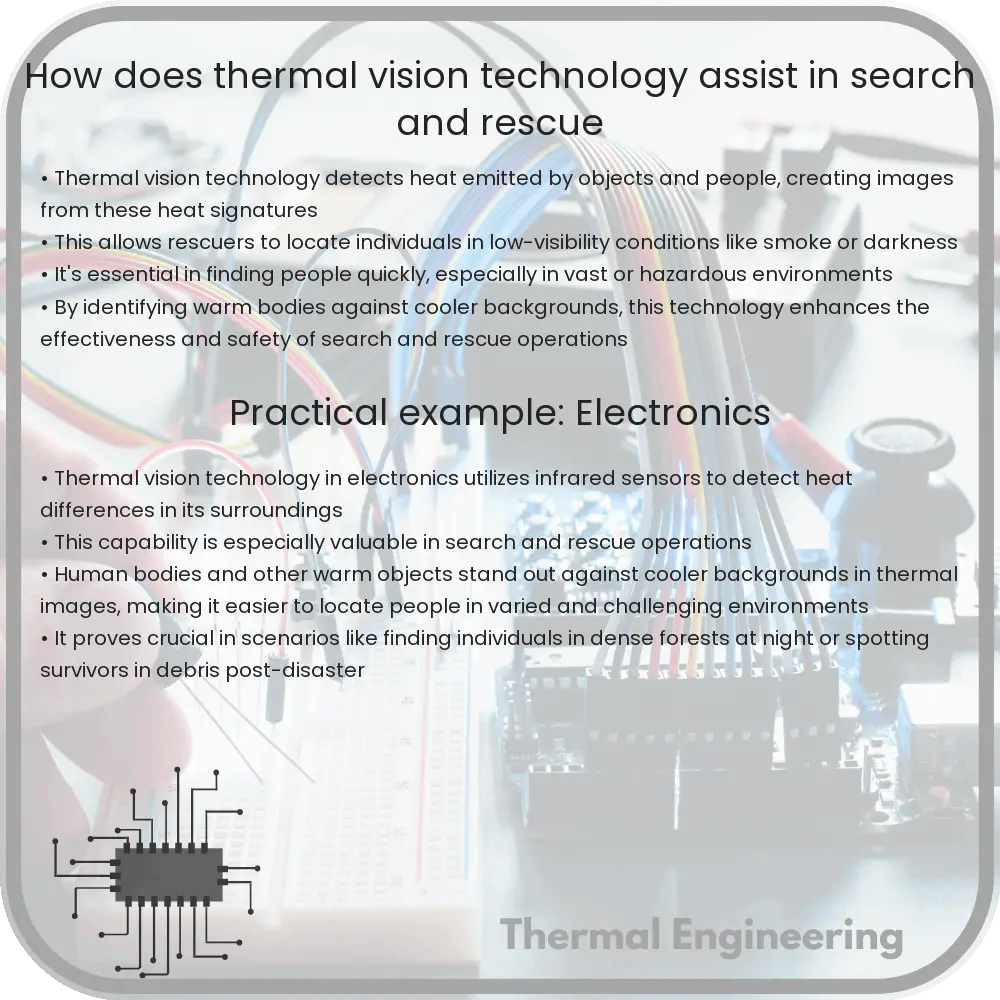Learn how thermal vision technology, or infrared imaging, aids search and rescue operations by detecting human heat signatures in various environments.

Understanding Thermal Vision Technology in Search and Rescue Operations
Thermal vision technology, also known as infrared imaging, plays a crucial role in enhancing the efficiency and effectiveness of search and rescue (SAR) missions. By detecting heat emitted by objects, particularly humans, thermal imaging cameras help rescuers locate individuals in challenging conditions, including smoke, fog, or darkness. This technology is invaluable in both natural disaster scenarios and in locating lost individuals in vast outdoor environments.
How Thermal Vision Works
Thermal cameras detect radiation in the infrared range of the electromagnetic spectrum (roughly 900 – 14,000 nanometers) and produce images of that radiation, called thermograms. Everything with a temperature above absolute zero emits heat. Thermal cameras can sense this heat in various environments and under different conditions, making it possible to see without any visible light.
- Emissivity: Different materials emit radiation at different efficiencies. This property, known as emissivity, affects how well a thermal camera can “see” an object.
- Thermal Contrast: Thermal contrast refers to the temperature difference between an object and its surroundings. Higher contrast generally makes it easier to detect objects.
Components of a Thermal Imaging Camera
Thermal imaging cameras primarily consist of the following components:
- Infrared Sensor: At the heart of the camera, this sensor detects infrared radiation and converts it into electrical signals.
- Optical System: Made from materials transparent to infrared rays, this system focuses the collected infrared radiation onto the sensor.
- Display: The electric signals from the sensor are processed to create a visible image that is displayed to the user.
Applications in Search and Rescue
Thermal vision technology assists search and rescue teams in several critical ways:
- Person Detection in Low-Visibility Conditions: Whether through thick smoke during a fire or on a foggy night, thermal cameras help rescuers locate human subjects by the heat emitted from their bodies.
- Locating Victims in Debris: In the aftermath of an earthquake or explosion, thermal sensors can detect heat sources under rubble, assisting teams in pinpointing trapped individuals.
- Searches Over Large Areas: Mounted on aircraft or drones, thermal cameras can scan extensive areas quickly, identifying warm spots that indicate human presence.
Challenges and Limitations
While invaluable, thermal imaging technology does come with challenges that impact its effectiveness:
- Environmental Factors: Weather conditions like rain, wind, or temperature can affect thermal signatures.
- Insulation: Clothing and other insulating materials can mask or blur the heat signatures of individuals, making detection more difficult.
- Resolution and Range: Limits in the resolution of thermal cameras or their detection range can also reduce effectiveness, particularly at greater distances.
In conclusion, thermal vision technology plays a vital role in search and rescue operations, significantly enhancing the ability of teams to locate individuals in dire situations quickly and efficiently. Continuing advancements in this technology are likely to improve its effectiveness and expand its applications, potentially saving more lives in future SAR missions.